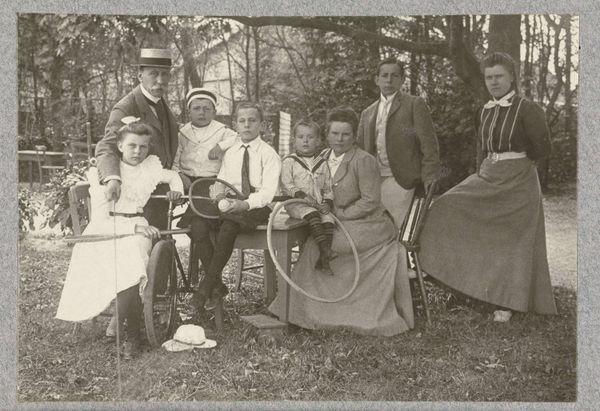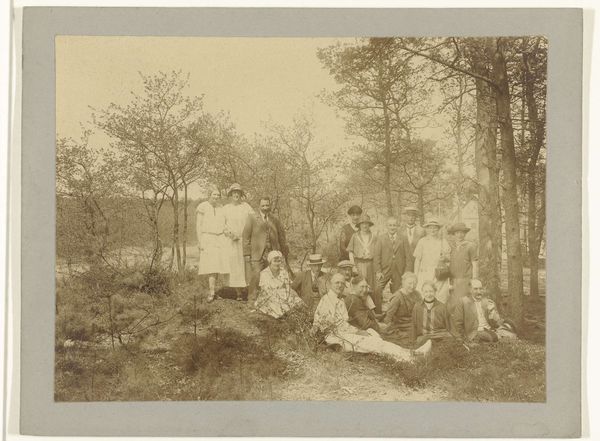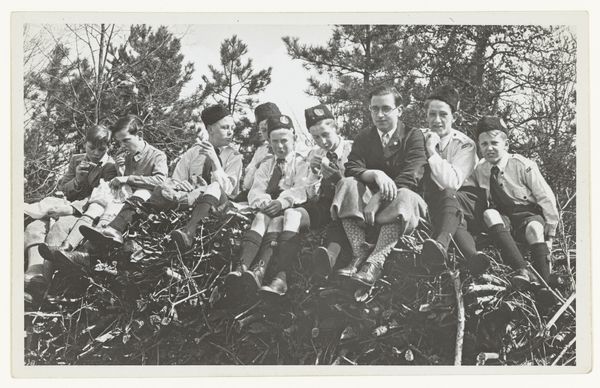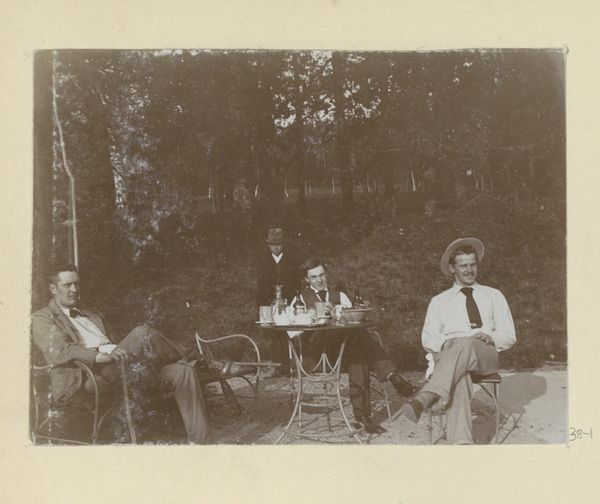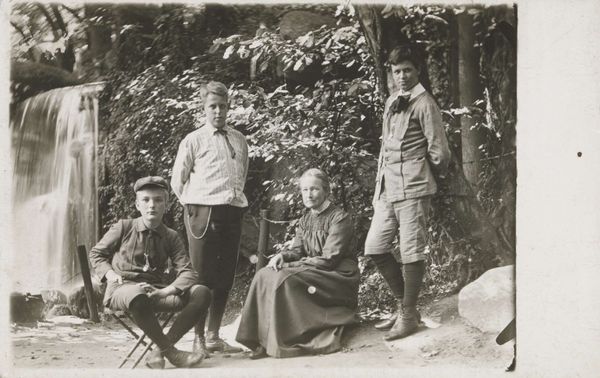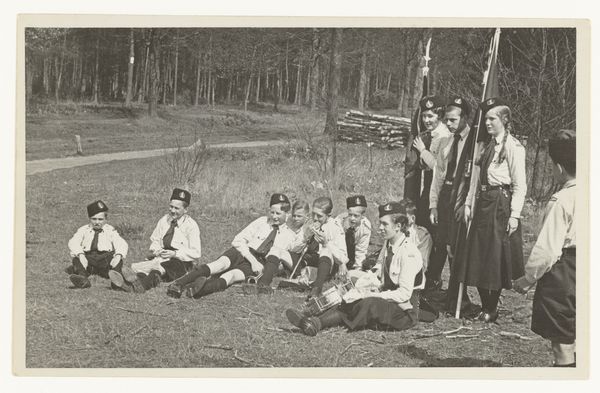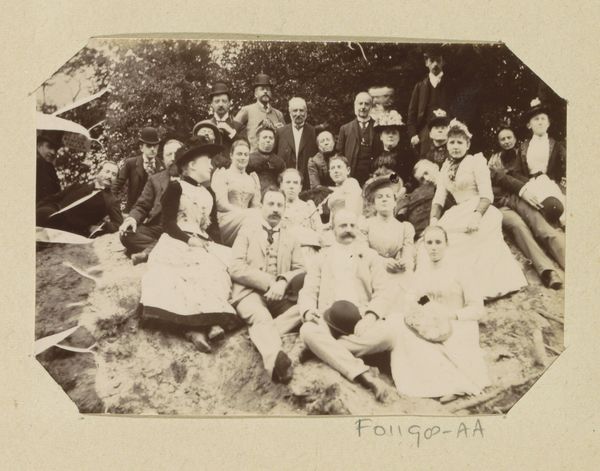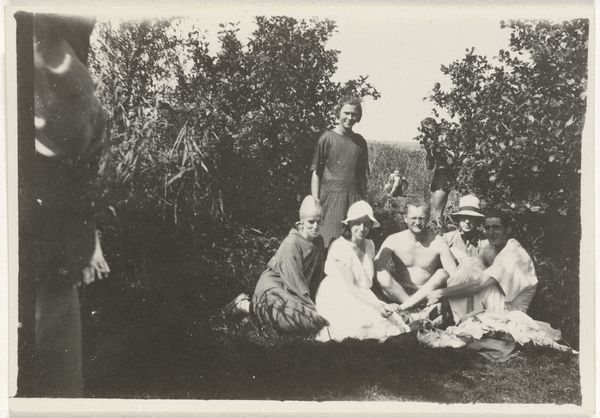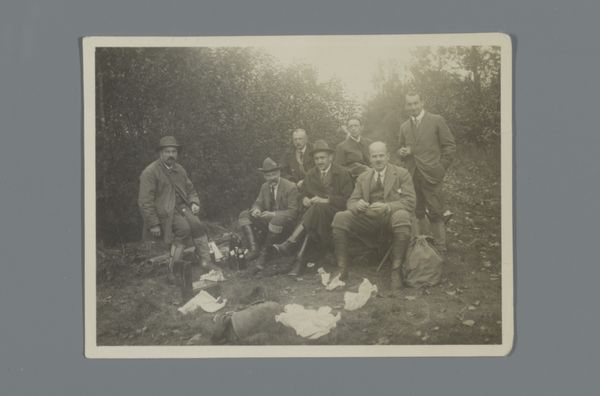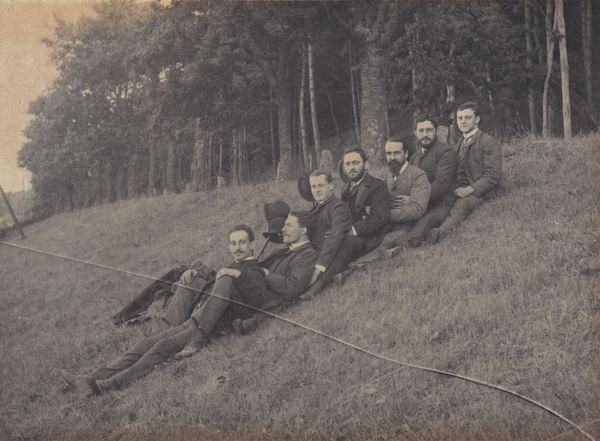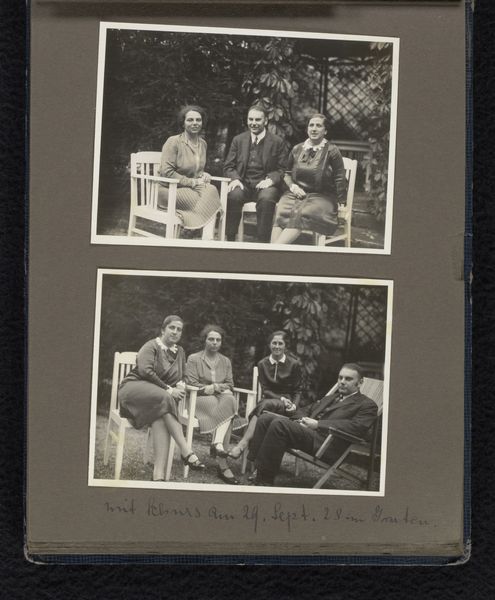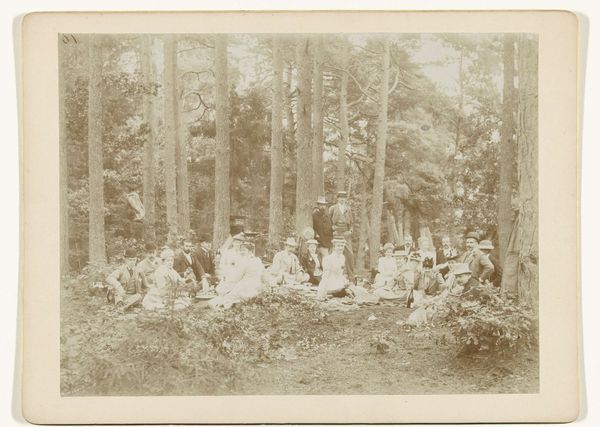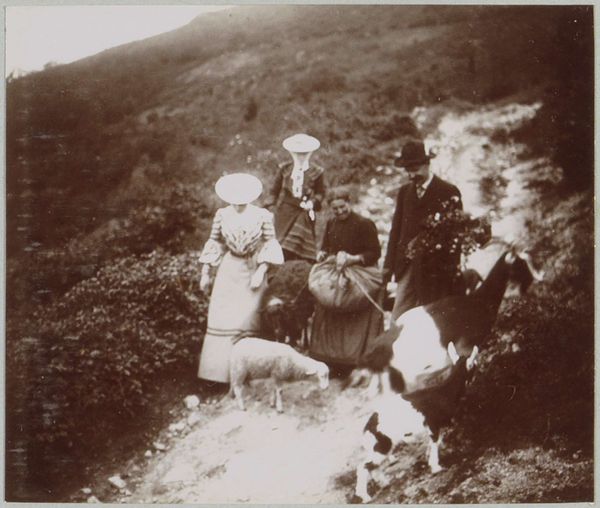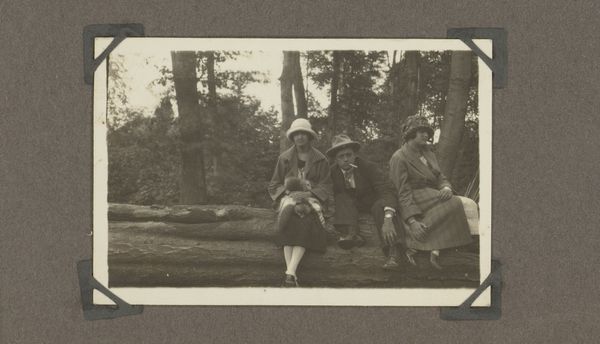
photography, gelatin-silver-print
#
portrait
#
pictorialism
#
photography
#
historical photography
#
old-timey
#
gelatin-silver-print
#
19th century
#
genre-painting
Dimensions: height 80 mm, width 109 mm
Copyright: Rijks Museum: Open Domain
Editor: This photograph, “Wandelgezelschap rust uit onder een boom”, or "Walking Group Resting under a Tree", by Hendrik Herman van den Berg, made before 1894 using the gelatin silver process, is wonderfully evocative. There's something about the group’s posed yet relaxed attitude that's really intriguing. What catches your eye when you look at this image? Curator: It’s fascinating how Van den Berg uses pictorialism, which gained traction in the late 19th century, to elevate photography to an art form, much like painting. He's consciously composing this group in a style reminiscent of genre painting, very self-aware of how art functioned within public life. Notice how they are dressed; would you say it represents a particular social class or aspiration? Editor: Definitely middle-class, maybe even upper-middle. Their attire is too neat and the setting too controlled to be truly casual. The bowler hats give it away. So, you are saying he's not just taking a snapshot, he's constructing an image of leisure for a particular audience? Curator: Precisely. He's building a narrative about who has access to leisure, who gets represented, and even how those representations circulate within a burgeoning photographic market. Photography like this helps to cement ideas about class and aspiration in the public's imagination. Editor: So it’s less about a natural moment and more about crafting a message through photography. Are the figures positioned in the location strategically? Curator: The light, the backdrop of trees... all very deliberate choices. They signal a connection to nature but also to established notions of beauty and cultivated taste. Consider who this photograph was intended for, and the values it reinforced. Editor: This gives me so much more to consider than just the visual aspect. It highlights the crucial role of historical and social context in understanding any work of art. Curator: Absolutely. Examining how photography functioned within 19th-century social structures opens up layers of interpretation, going beyond what simply meets the eye. It encourages us to consider the photograph as a historical object itself.
Comments
No comments
Be the first to comment and join the conversation on the ultimate creative platform.
